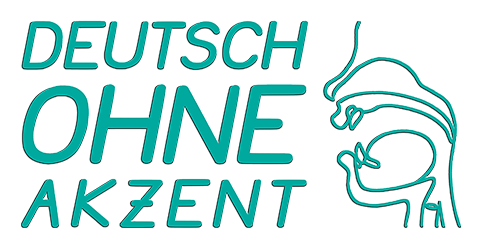INTRODUCTION

Welcome to the DEUTSCH OHNE AKZENT library!
This first section offers my personal insights into key terms central to this project that are often misunderstood, with the Germans, Germany, and the German language as examples. All headings are arranged alphabetically.
ACCENT
Since each dialect or language has typical linguistic features, and German speakers come from different regions and countries, it is completely natural that they (mostly unconsciously) transfer the pronunciation habits of their native dialect or language to (standard) German. The audible result is a (regional or foreign) accent.
If we orient ourselves on the German standard pronunciation, even in Germany relatively few people really speak accent-free German, although language changes over time so that many originally dialectal features are now also considered standard language. To this day, the city of Hanover is considered to be the epicenter of the German standard pronunciation, which does not automatically mean that all Hanoverians speak clear standard German and all other Germans have a regional accent—sometimes it is the opposite.
CONSONANT
A consonant is a sound that involves noise resulting from constriction (touch, friction, vibration, etc.) in the vocal tract. This noise can occur with the use of the vocal cords (voiced consonant) or without them (unvoiced consonant). It is typically not able to form a syllable.
As in English, German consonants that are produced with our vocal cords are actually semi-voiced, as they are pronounced with less tension than in some other languages, such as Russian.
Overall, German speech is characterized by a rich variety of consonant sounds.
DIALECT
A German dialect is a traditional local variety of the German language that has the characteristics of an independent language—its own phonetics, its own grammar, and its own lexis. As for the latter, different things can be called differently in different regions, so that even Germans themselves do not understand each other. Thus, a dialect can be called an unofficial language.
German dialects emerged at the beginning of the Middle Ages during the migration of peoples, when the nomadic Germanic tribes settled and developed their own languages. Sometimes these areas were separated by no more than a river or a mountain range. Since people did not leave their villages and towns for centuries, it did not bother anyone that just ten kilometers away people spoke a completely different language. With growing trade and improved travel opportunities, however, the need for a common language that everyone could understand and speak finally arose. Today’s Standard German is therefore merely a compromise. Some tribes rejected it, which resulted in their own languages becoming independent (such as present-day Luxembourgish), while other tribes slowly weaned themselves from their mother tongue. The mass media, especially radio, gave an additional boost to the spread and development of this common language. Many dialects eventually adapted to today’s Standard German, while others gradually disappeared completely because they were no longer needed.
Today a trend can be observed that with each new generation fewer and fewer people speak their native dialect—a loss of linguistic diversity and cultural heritage.
LETTER
A letter is a character that represents a specific sound or sound combination. In German, for example, the letter E represents the sounds [e], [ɛ], and [ə], while the letter Z represents the sound combination [ts].
It is important to note that the German writing system is not independent but rather an extension of the Latin alphabet. The letters used to write German words are therefore not German but Latin. The German alphabet consists of the 26 basic Latin letters, as well as the three umlauts and the letter Eszett.
PHONETICS
Phonetics is a branch of linguistics that studies the sounds used in human language, both in terms of perception and production; therefore, on top of grammar, lexis and orthography, it is an essential part of learning German. Strangely enough, it is often overlooked as a separate discipline worth assessing when it comes to language examinations. As a result, many German beginners typically do not pay much attention to it, yet take it up later on their own initiative as they may face difficulties in everyday life or at work due to their pronunciation.
Despite their great interest in the subject, many have a hard time reducing their accent when speaking German; they often rely on inaccurate and incomplete online resources or language schools that do not specialize in phonetics. Also, their ability to hear and correct their own pronunciation may be limited.
PHONETIC TRANSCRIPTION
The International Phonetic Alphabet (IPA) is a system of phonetic notation based on the Latin and Greek scripts. It allows for the accurate representation of the sounds of all human languages. Developed by the International Phonetic Association in the late 19th century, the IPA is now the most widely used phonetic transcription system among language learners, teachers, and linguists.
In different sources and dictionaries that use the IPA, there may be variations in the transcription of certain words as there is no single, unified transcription system. For this project and for the German language, I have created my own transcription system based on the IPA while ensuring that it is easily understood.
PRONUNCIATION
What do people generally mean when they say, „Your German is great“? And what is the first thing you notice when you hear someone speaking a foreign language? There is a widespread phenomenon in our society: 1) If you know a foreign language poorly or not at all, i.e. you have no idea about grammar and lexis, but you say one single sentence to a native speaker without an accent, he thinks, „Wow, he speaks so well!“, even though you just said one sentence. Conversely, 2) if you have a perfect command of a foreign language, don’t make any grammatical mistakes and speak fluently, but have a very strong accent of your native language, the native speaker, provided he understands you, will think, „Okay, his German is not the best. Perhaps he hasn’t been learning it that long.“
What does this phenomenon tell us? It highlights the disconnect between language proficiency and pronunciation. For example, having a C2 certificate does not guarantee that a person speaks without an accent. On the other hand, it is possible for someone with a lower language level, such as A1, to have a good pronunciation for various reasons, such as being very young, having a musical ear, or having a background in phonetics.
SOUND
A sound is an acoustic event generated by the movements of the lips, tongue, and throat during speech. In phonetics, each sound is associated with a transcription symbol that reflects its phonetic properties. The graphic representation of a sound is achieved through specific letters and letter combinations.
For instance, in German, the sound [i] can be realized in words through I, IH, IE, IEH, and Y, while [ŋ] is usually represented by the letter combination NG or the letter N.
VOWEL
A vowel is a voiced sound produced with our vocal cords and articulated without any constriction in the vocal tract. It is able to form a syllable.
Regarding German vowels, they have unique features that distinguish them from vowel sounds in other languages, requiring special attention:
1) In English, when pronouncing the letters‘ names [oʊ] (letter O) or [juː] (letter U), it is actually two sounds that are produced (a diphthong). However, in German, the letters‘ names [oː] (letter O) or [uː] (letter U) are pronounced with a clear and pure sound that is sustained throughout its whole articulation, as if the sound is cut off at the end.
2) Similar to English phonetics, German distinguishes between long and short vowel sounds. Each vowel letter represents two primary vowel sounds. The long vowel sound corresponds to the letter’s name in the alphabet and is pronounced for the duration of the syllable with high muscular tension, while the short vowel sound is pronounced as briefly as possible without any muscular tension.

